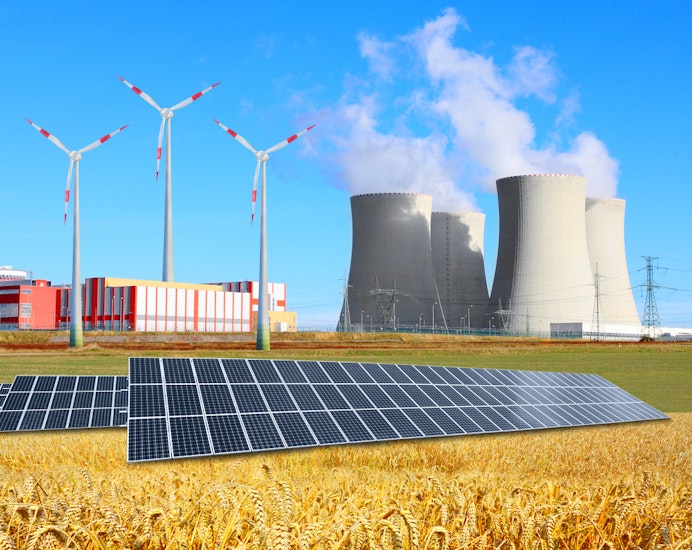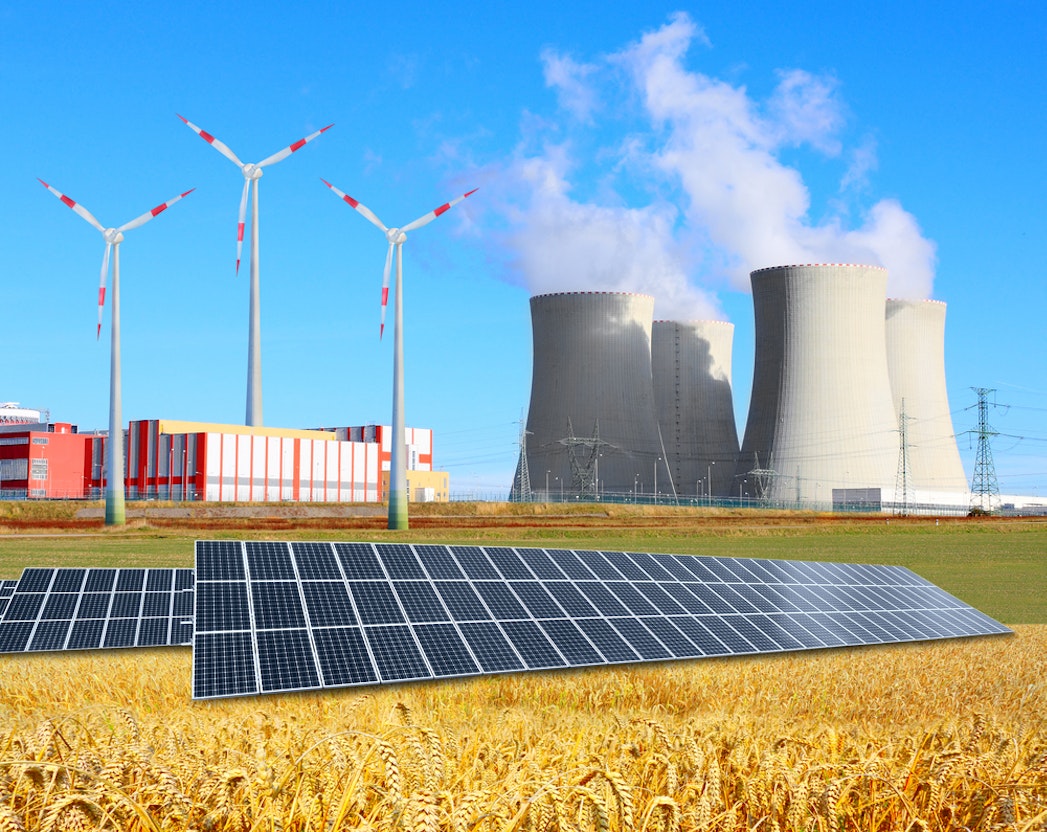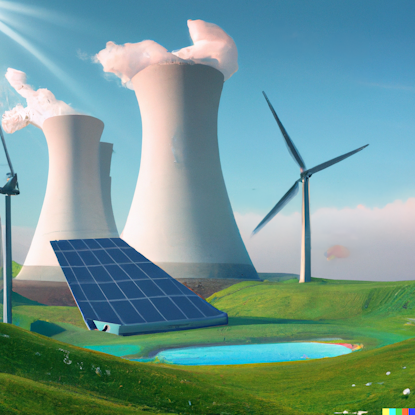


NSW Energy Crunch: Costs & Challenges of Coal to Renewables Transition
08 Apr 2023
Jonathan Carroll
Director & Engineering Manager
[1] Australian Energy Market Operator (AEMO). (2021). Integrated System Plan. [2] International Renewable Energy Agency (IRENA). (2021). Renewable Power Generation Costs in 2020. [3] Australian Energy Market Operator (AEMO). (2021). Electricity Statement of Opportunities (ESOO). [4] Parliament of Australia. (2021). Nuclear power in Australia. [5] Australian Competition & Consumer Commission (ACCC). (2021). Electricity Sector Monitoring Report
The NSW Energy Crunch: Exploring the Costs and Challenges of Transitioning from Coal to Renewable Energy
Introduction
The energy landscape in New South Wales (NSW) is undergoing a significant transformation as the state faces an energy crunch due to the planned closure of several coal-fired power stations[1]. These power stations have been key players in the state's energy production, but they are gradually being phased out in favour of renewable sources such as solar and wind. In this blog post, we will explore the cost implications of replacing these coal-fired power stations with renewable energy sources, discuss the need for a robust backup battery system, and consider the role of nuclear power in the state's energy mix.
In this post, although very important we will not consider the impact on consumer power bills, increase in the states load from adoption of Electric Vehicles, likely increased power outages as well as the feasibility of the transition in terms of timeline, available workforce, and the available revenue for both the government and private sector.
The 5 largest Coal Power Stations in NSW and Their Share in Generation
The five most significant coal-fired power stations in New South Wales, Australia, and their respective contributions to the overall electricity generation in the region.
1. Eraring Power Station: Location: Eraring, NSW Operator: Origin Energy Capacity: 2,880 MW Operational: Origin Energy to close by August 2025 | 2. Bayswater Power Station: Location: Muswellbrook, NSW Operator: AGL Energy Capacity: 2,640 MW Operational: AGL has plans to close it between 2030 and 2033 |
3. Liddell Power Station: Location: Muswellbrook, NSW Operator: AGL Energy Capacity: 2,000 MW (originally) Operational: scheduled for closure in 2023 | 4. Mount Piper Power Station: Location: Portland, NSW Operator: EnergyAustralia Capacity: 1,400 MW Operational: scheduled for closure in 2040 |
5. Vales Point Power Station: Location: Mannering Park, NSW Operator: Sunset Power International (Delta Electricity) Capacity: 1,320 MW Operational: Expected to close by 2029 |
The total installed capacity in NSW was around 20,000 MW as of 2021. The combined capacity of the aforementioned coal-fired power stations is 10,240 MW. The percentage of generation for each power station is as follows:
Bayswater Power Station: 25.78%
Eraring Power Station: 28.13%
Liddell Power Station: 19.53%
Mount Piper Power Station: 13.67%
Vales Point Power Station: 12.89%
The Cost of Transitioning to Renewable Energy Sources
To replace the 10,240 MW of coal-fired capacity in NSW with renewable energy sources such as solar and wind, significant investments will be needed[2]. As of 2021, the average cost for utility-scale solar PV was around AUD 1.5 million per MW, while the cost for onshore wind was around AUD 2 million per MW. Assuming these costs remain constant, replacing the coal-fired capacity with an equal mix of solar and wind energy would require an investment of approximately 18 Billion AUD.
The Need for Backup Battery Storage
In addition to the investment in renewable energy capacity, there is a need to consider the cost of backup battery storage systems to ensure a reliable supply of electricity during periods of low solar and wind generation[3]. This is a hard period to determine, but it is likely between two days to two week's worth of backup storage would be necessary to maintain grid stability during extended periods of low renewable energy production.
As of 2021, the cost of utility-scale lithium-ion battery storage was around AUD 300 per kWh. To provide between two days to two weeks 10,240 MW capacity, the following capital for battery storage would be required:
Low Range Estimate: 10,240 MW * 2 days * 24 hours * $300 = $174 Billion AUD
High Range Estimate: 10,240 MW * 14 days * 24 hours * $300 = $1032 Billion AUD
The Role of Nuclear Power in the Energy Mix
In the face of the NSW energy crunch, the absence of nuclear power in the energy mix is notable[4]. Nuclear power offers a reliable and low-emission alternative to coal-fired power, with the potential to provide baseload power at a stable cost. Despite its benefits, nuclear power has been largely overlooked in the state's energy plans. The lack of consideration for nuclear power may contribute to the high costs associated with transitioning to renewable energy sources and the resulting impact on consumers.
Low Range Estimate: $5,000/kW * 10,000,000 kW = $50 Billion AUD
High Range Estimate: $9,000/kW * 10,000,000 kW = $90 Billion AUD
Conclusion
The transition from coal-fired power stations to renewable energy sources in New South Wales is an important step towards meeting the state's energy demands in a manner that aligns with current political goals. However, as we have explored in this blog post, this transition comes with significant costs and challenges. Replacing the 10,240 MW of coal-fired capacity with solar and wind energy would require an investment of approximately 18 Billion AUD, while the cost of backup battery storage ranges from $174 Billion to $1032 Billion AUD, depending on the extent of storage capacity needed.
The exclusion of nuclear power from the energy mix raises questions about the most efficient and cost-effective means of achieving the state's energy goals. Nuclear power, as a reliable alternative, has the potential to provide baseload power at a more stable cost, with estimates ranging from $50 Billion to $90 Billion AUD for an equivalent capacity.
As New South Wales moves forward with its energy transformation, it is crucial for policymakers and stakeholders to carefully weigh the costs and benefits of various energy sources, as well as the potential role of nuclear power, in order to achieve a balanced and resilient energy system. This will be essential in order to minimize the financial impact on consumers and ensure a secure and reliable energy supply for the state.
References:
[1] Australian Energy Market Operator (AEMO). (2021). Integrated System Plan. Retrieved from https://aemo.com.au/en/energy-systems/major-publications/integrated-system-plan-isp
[2] International Renewable Energy Agency (IRENA). (2021). Renewable Power Generation Costs in 2020. Retrieved from https://www.irena.org/publications/2021/Jun/Renewable-Power-Costs-in-2020
[3] Australian Energy Market Operator (AEMO). (2021). Electricity Statement of Opportunities (ESOO). Retrieved from https://aemo.com.au/en/energy-systems/major-publications/electricity-statement-of-opportunities-esoo
[4] Parliament of Australia. (2021). Nuclear power in Australia. Retrieved from https://www.aph.gov.au/About_Parliament/Parliamentary_Departments/Parliamentary_Library/Browse_by_Topic/Nuclearpower
[5] Australian Competition & Consumer Commission (ACCC). (2021). Electricity Sector Monitoring Report. Retrieved from https://www.accc.gov.au/publications/electricity-monitoring-report


